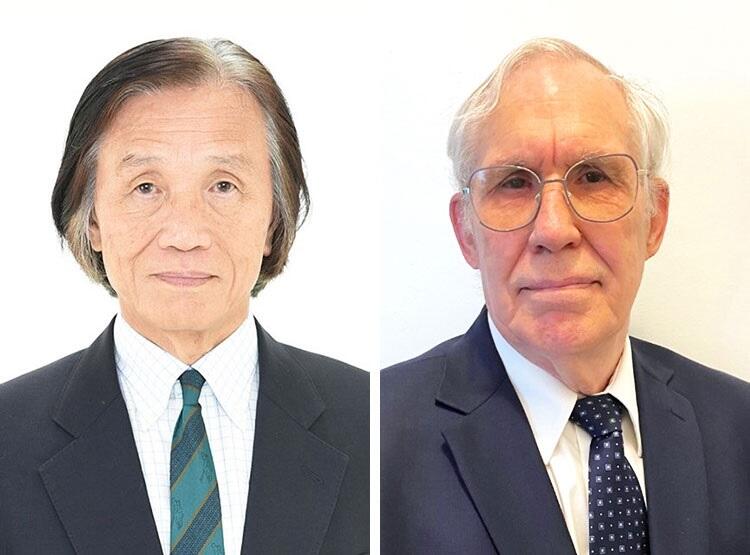The Honda Foundation (President, Hiroto Ishida) has announced that the Honda Prize 2023 was awarded to Dr. Masato Sagawa (an advisor to Daido Steel), and Dr. John J. Croat (former president of John Croat Consulting, USA) for their independent inventions of the world's strongest permanent magnet, 'neodymium (Nd-Fe-B) magnet.' The Prize was presented in recognition of the achievement of the significant miniaturization of motors and electronic devices, which has advanced the utilization of Information Technology (IT) in society and has contributed to a reduction in carbon dioxide (CO2) emissions. The presentation ceremony was held in Tokyo on November 16, and 10 million yen in total was awarded to them.

Provided by the Honda Foundation
Permanent magnets are utilized in a wide range of fields, including electronics, machinery, and automobiles, and have become a key component of the modern age. The most powerful magnet was developed in 1969 by combining the rare element samarium with the metal cobalt. Owing to the fact that both elements are scarce resources, high-performance magnets that do not require expensive materials were sought.
Given such circumstances, both researchers investigated the possibilities of magnets that make use of the abundance of iron. Instead of using samarium, they invented a permanent magnet with neodymium, which is relatively abundant among rare earth elements, and a trace amount of boron simultaneously.
Sagawa recognized that the difficulty for developing magnets using rare earth elements and iron was that the distance between iron atoms is too close. He hypothesized that "if a substance of a smaller atomic size can get between iron atoms, the distance between them can be expanded." In 1978, Sagawa discovered that combining neodymium and iron with boron, a smaller atom, produces a strong magnetic force. However, it was later found out that the addition of boron does not increase the distance between iron atoms, but rather changes the properties of iron.
Furthermore, he discovered the 'sintering method,' a manufacturing process that bonds particles together using heat treatment. Neodymium magnets manufactured using this method were capable of extracting significantly more energy than conventional samarium-cobalt magnets. Mass production began only three years after the patent application was filed in 1982. Starting with automobiles and home appliances, more recently, neodymium magnets have been used for electric vehicle motors and wind power generation and continue to be extensively adopted worldwide.
Meanwhile, Croat was instrumental in magnet development at the American automobile giant General Motors research institute. In 1982, he developed the 'liquid quenching method,' in which a compound of neodymium, iron, and boron liquefied at a high temperature is rapidly cooled to produce a high-performance permanent magnet. This method became the basis for 'bonded magnets,' which are created by solidifying magnet powder with resin and molding it. Although less magnetic than the ones using the sintering method, bonded magnets can be formed into complex shapes, and their use in precision equipment including computer peripherals has advanced. By improving manufacturing method, a bonded magnet with performance equivalent to that of the sintering method was also developed.

Provided by Daido Electronics
Today, neodymium magnets are utilized in motors spanning a wide variety of products, including automobiles, home appliances, precision equipment, and industrial machinery, and are significantly widespread accounting for 95% of the permanent magnet market share. These technological advancements have become key indispensable components in multiple fields, including hard disk miniaturization to promote IT in society. Through electrification and improved motor performance, this has led to a reduction in CO2 emissions.
Original article was provided by the Science Portal and has been translated by Science Japan.




